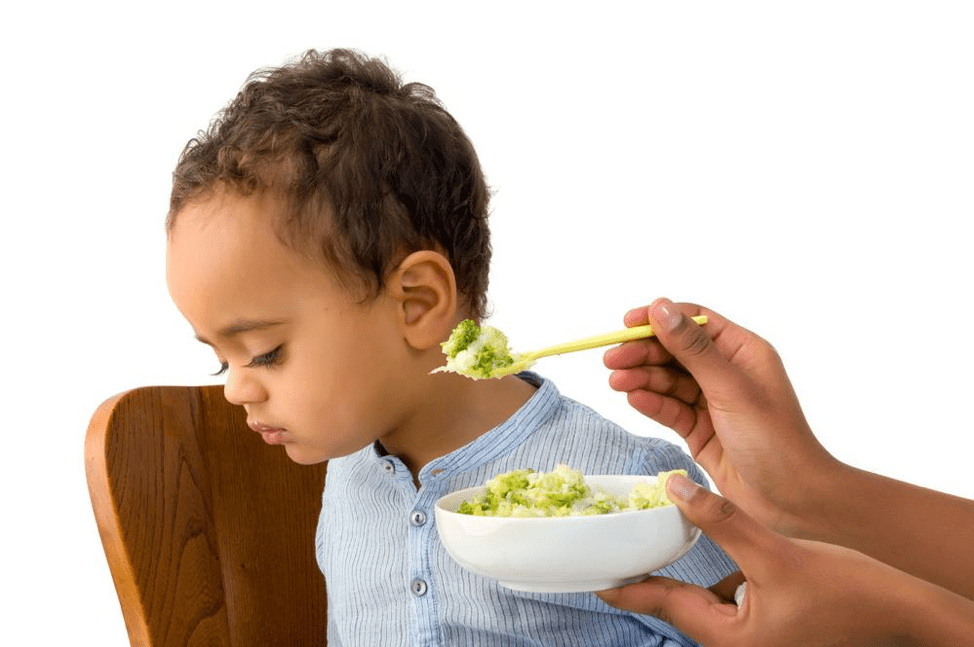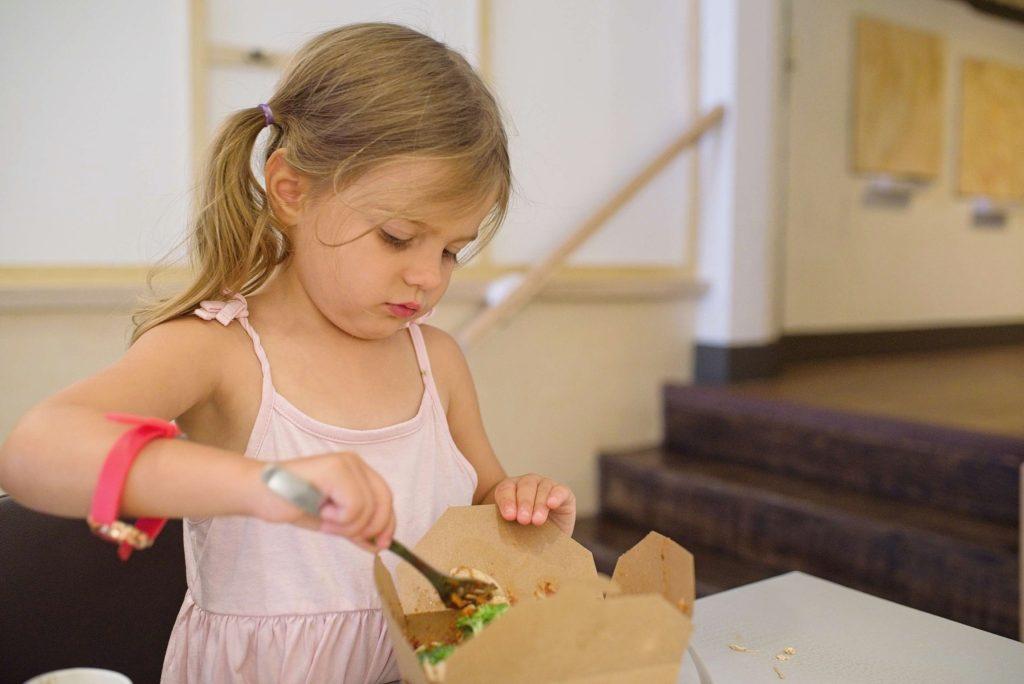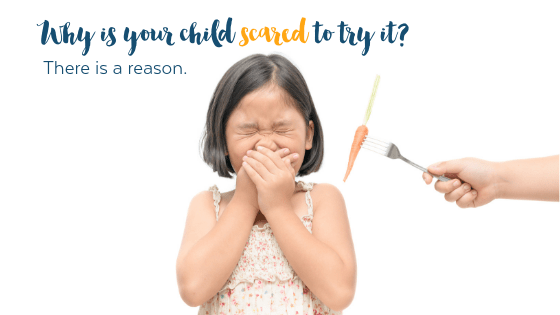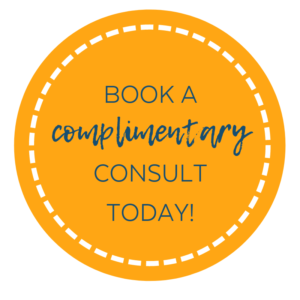This is going to sound crazy but, your child is afraid of food.
Freaked out by that carrot.
Sees zucchini and wants to run the other way.
And you are losing your mind because it’s JUST food. But is it?
I needed to put this blog post out there to because it may be the thing that changes your perspective when it comes to feeding your child.
Imagine this…
You’re in another country and a food that you have NEVER seen or tried before is placed in front of you.

It looks different, and smells different. Naturally you are nervous.
How will this thing taste?
How will it feel in my mouth?
Will I be able to swallow it?
Will it make me sick?
Not only are you expected to eat it, you are kept at the table until you just try it. Now, imagine how you might feel. Anxious, nervous…perhaps as though you might want to throw it on the floor and run like heck! This is often the position we put our toddlers and children into, even with the best of intentions.
If you’ve seen the Free Training – 10 proven strategies for helping picky eaters eat better you know what I’m talking about. That’s why it’s important to implement the 10 strategies provided in the webinar to help you quickly overcome that free of tryings foods.
But we shouldn’t be afraid of food!
Actually we should.
It’s a protective mechanism for humans and even wildlife. It’s called Food Neophobia.
Neophobia is a general term for a fear of new things. When we apply this term to food, Food Neophobia refers to a fear of new and unfamiliar foods. Also known as ‘picky eating’… you might be familiar with it (wink, wink). Food Neophobia is a normal part of toddlerhood.
In fact, it is a scientifically proven fact that we are initially very drawn to sweet foods and repelled by bitter foods. The reason why children want sweet foods (think carbs) is because they are calorie-dense, and toddlers need calories to grow. And sweet foods are deemed “safe” biologically.
On the other hand, vegetables contain far fewer calories and are often more bitter – “this bitter taste is caused by the calcium content, as well as the presence of beneficial compounds such as phenols, flavonoids, isoflavones, terpenes, and glucoronates.” (source) . Toddlers and children are averse to many vegetables as their bitterness could be a sign of something poisonous.

It’s important to understand Food Neophobia
As the expression says:
The oldest and strongest emotion of mankind is fear, and the oldest and strongest kind of fear is fear of the unknown.
If we understand why our children are fearful of food, we can come up with ways to create a more positive and comfortable environment around new food, which will positively affect their health for the rest of their lives.

Are there risks?
According to the National Institute of Health and Welfare, the risk of chronic lifestyle diseases such as cardiovascular disease and type 2 diabetes increases with poor diet.
Of course, Food Neophobia or picky eating is not always to blame for a toddler or child not wanting to eat. Other behavioural issues can contribute, so it is always important to really figure out the root cause.
A study conducted in June 2019 has shown that the impacts of Food Neophobia are seen regardless of:
- Weight
- Age
- Socioeconomic status
- Gender or living area
Thus, anyone can be affected by Food Neophobia.
Have you noticed that allergies in children seem to be more and more prevalent? Could picky eating and allergies be connected? It seems that yes, they can.
A study that was done in 2012 looked at 180,000 children in 51 different countries and concluded that eating a low-quality diet that includes lots of processed food “increased the chances of a child developing a food allergy or asthma by 39%.” On the other hand, “eating a diet containing a larger variety of unprocessed foods reduced this chance by 11%.” (source)
This means that there appears to be a relationship between a high-varied diet and fewer chances of asthma and allergies.

What to do about it
Exposure Exposure Exposure!!!
Or as one of my favourite over-played songs says, “Don’t stop believing”. We’ve got to keep putting the food in front of them. Even if they resist 15 times or 150 times. The more they see and interact with these foods the more familiar (and less fearful) they become.
Here’s some scientific proof:
In June 2019, a controlled trial was tested out in 23 childcare centres. Twenty-two children were included and on average they were 3.6 years old. The trial was set up to promote healthy habits in their diets. They first conducted a food tasting assessment which included 9 foods: grapes, cheese, crackers, chickpeas, edamame, water chestnut, kidney beans, papaya, and olives. The least known foods were papaya, edamame, and horse chestnut and the most known foods were whole wheat crackers, grapes, and string cheese… and were not surprisingly the most tried foods at 73-79%.
In summary, when children are familiar with foods, they are more likely to try them!
Early and frequent exposure to novel foods may increase children’s familiarity and willingness to try foods. (Study)
Back to our example above…
If you could touch these century eggs, poke at them, get comfortable with the smell, and see others eat them regularly (while not being pushed to just try it), you might become more curious too. And eventually, be brave enough to put it in your mouth.
So the next time you put a piece of asparagus in front of your child, put yourself in their shoes. Remember, they are just afraid – because they should be. Our job is to help remove that fear in a fun way.
Here’s one way to do that, with the Superpower Foods Placemat.
Last but not least, a big thank you to Leanne Acosta (fellow nutritionist and mom) for pulling the research and writing together for this blog post.









What if a child will try new foods but doesn’t like the taste of any of them and then won’t try them again?